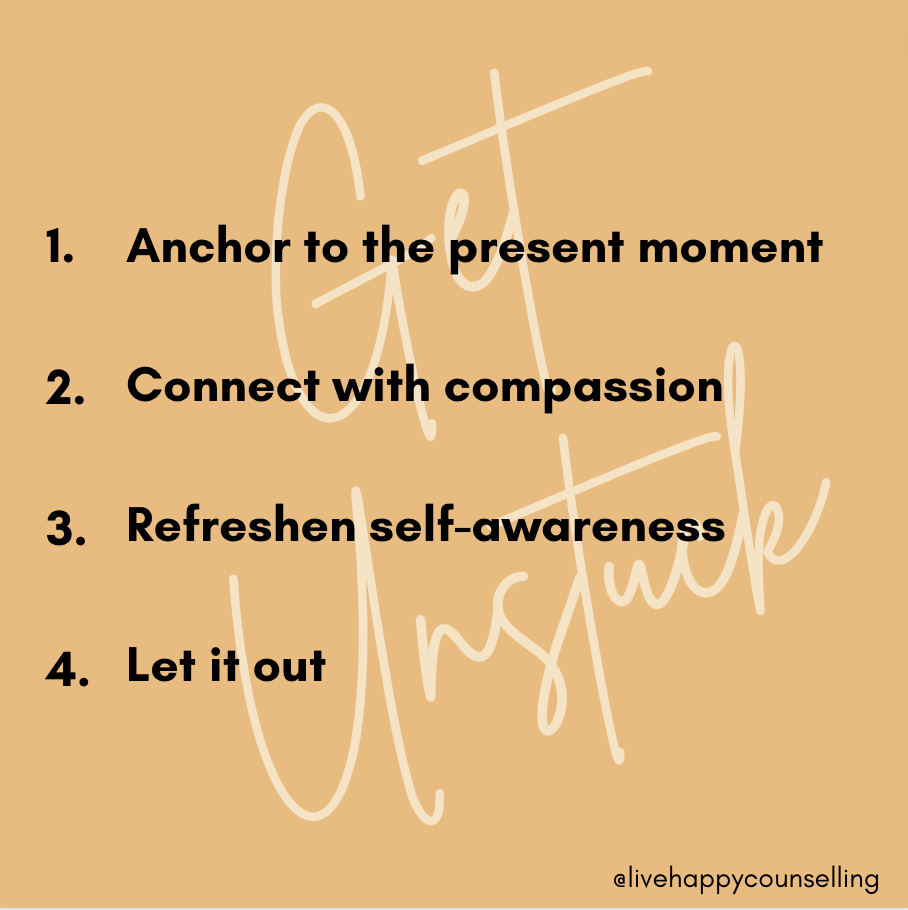Trauma Therapy ExplainedPeople tend to consider attending counselling for a long time before they reach out to start it up. Making that initial phone call can stir up fear and uncertainty. And once an appointment is scheduled, actually attending it can stir up anxiety and doubt. I believe it does take a tremendous amount of courage to start up counselling: to entrust your story to a stranger invites vulnerability. Yet for each courageous soul that takes the first step, there is hope. Hope says “This will help”, and “I can get through this”. To anyone reading this who has been considering starting up counselling but has been apprehensive, I’d like to demystify the counselling process. When it comes to working with trauma, I use the Three Stage Trauma Recovery Model, which was developed by Judith Herman in the 1980’s. I use the model as a framework within which all therapeutic interventions launch from. Please Note: Each client is unique, and therefore counselling is not a one-size-fits-all service. While you read the following information, please know that it might look a little different for each person. Also, rarely do we move through the model in a fully linear manner, (stage 3 often initiates during stage 2 work). Stage 1 – Safety and StabilizationCounselling often begins with history taking. I typically ask about what brings a person in for counselling, and gain an idea of their history in a “newspaper headline” manner. I use the newspaper headline approach because at this point, I am still a stranger to the client, and he or she may not yet feel comfortable sharing a detailed portrait of their life. Then, we collaboratively develop treatment goals. Within the first stage, the focus is on safety and stabilization. That refers to external (living environment) and internal (emotional safety). Elements in this stage may include:
According to Judith Herman (1982) the goal of stage 1 trauma work is to create a safe and stable life-in-the-here-and-now, which can enable folks to safely remember the trauma, and not continue to re-live it. You might feel as though you want to start working on the tough stuff right away, perhaps feeling a sense of urgency to “feel better” or to “heal this right now”. However, there is great importance of stage 1 work, and we can not skip over it. Think of it this way: If you had a car with shoty brakes, no seatbelts or airbags, no horn, bald tires, and a foggy windshield – you could still get from point A to point B. However, you would likely feel terrified the entire way. The resourcing and affect regulation strategies of stage 1 are like the safety features in a car: they enable you to get from point A to point B without full-blown panic and emotional overwhelm. Stage 2 – Coming to Terms with TraumaOnce an individual has developed the ability to regulate emotion and achieve a level of internal emotional safety, trauma processing can begin. As we work through a trauma, I keep a keen eye on resourcing to ensure a client isn’t become too flooded with emotion. Techniques are used to modulate this process, and I employ several end-of-session strategies to assist folks in stabilizing emotion prior to leaving the office. Here are some elements stage 2 may include:
Stage 3 – Integration and Moving onAs we work through trauma processing, elements of the third stage begin to show up. Some of these elements include:
As a result of doing the work of trauma therapy, the trauma starts to feel farther away, as something that happened but that is no longer a daily focus disrupting life. If you are thinking of starting up therapy, and have some questions, please feel free to reach out and ask. The decision to move towards self-growth and healing can be empowering and freeing. I hope you give it a go! If you’d like to learn more about the Three Stage Trauma Recovery Model by Judith Herman, check out these resources:
0 Comments
When we find ourselves stuck in negative looping thought-patterns, we often need a way out – a life preserver of sorts to pull us to safety. Here are four suggestions that might help you exit those negative thought cycles. 1. Anchor to the Present MomentWhen we find ourselves stuck in negative thinking, we may be ruminating about the past or worrying about the future. We can not change the past, and when we worry about the future, we are robbing today of its strength. Returning to the present moment may be just what you need to let your nervous system settle. Once you shift out of that worry or fear loop, your problem-solving brain can come back on-line, and the negative loop is interrupted. Not sure how to get back into the present moment? Here are some ideas: 5-4-3-2-1: Look around the room you are in, and carefully describe 5 things you can see, 4 things you can touch (actually move around and touch the items), 3 things you can hear, 2 things you can smell, and 1 thing you can taste. Ground with Colour: Look around the room you are in and take notice of everything you can see that is blue. Go slowly, pausing to notice what the item is and its particular shade of blue. Move on from blue to notice everything that is green, then orange, and so forth until you have gone through all the colours or until the looping thoughts have settled. Letter Association by Word: Pick a word any word, and then break it down letter by letter, coming up with as many other words that start with each letter of your chosen word. (For example: if your word is COPING, start by thinking of as many words as you can that begin with the letter C, then O words, then P, then I, then N, then G.) (These strategies are helpful because they focus our attention in a directive manner, and thus can interrupt the negative or looping thoughts that so often accompany anxiety. And the result? You return to the present moment, and the looping thoughts are interrupted.) 2. Connect with Compassion When we are caught up in negative looping thoughts, our heart tends to be closed off. In other words, we might be thinking about the worst-case scenario, putting ourselves down, feeling as though things will never get better, and even thinking negatively of those in our lives. To exit the negative loop, try mixing in some compassion. Dr. Kristin Neff writes, “instead of mercilessly judging and criticizing yourself for various inadequacies or shortcomings, self-compassion means you are kind and understanding when confronted with personal failings – after all, who ever said you were supposed to be perfect?”. Having self-compassion means that you honour and accept your humanness – not self-downing but just being present with loving kindness. Not sure how to connect with self-compassion? Here are some ideas:
3. Refreshen Self-AwarenessWhat is beneath your upset? Are you feeling unheard, unworthy, or unaccepted? Sometimes when we are caught up in a negative cycle, we start telling ourselves things that serve to keep the cycle going. These might be called thinking traps, negative core beliefs, or psychological defences. Regardless the name you use – take a moment to deepen your self-awareness and tune in to the narrative you are telling yourself. If it is negative, take a few moments to breathe deeply and return to the present moment with loving-kindness. You might want to question that negative narrative. For example, is what you are telling yourself 100% true, 100% of the time? What would you rather be telling yourself, or what could also be true instead? The latter question will start you down the road of connecting with the positive belief you would like to build. 4. Let it outSometimes talking it out can help. Is there someone in your life that you could vent to? Not for advice (unless you want it) – but rather a sounding board who can witness your tidal wave and be waiting on the shore as you ride the surf out. Emotional settling can occur when we connect with a caring friend or family member and feel heard.
If no one is around, try venting by writing out what you are feeling. You can also draw, doodle, scribble, or paint. Have you discovered some ideas that help to healthfully shift out of negative looping thoughts? If so, please add what works for you in the comments. |
AuthorSusan Guttridge is a trauma-informed Master level Counsellor with the clinical designation of Canadian Certified Counsellor (CCPA). She has 20+ years experience providing individual and group therapy. Archives
January 2024
Categories
All
|



 RSS Feed
RSS Feed